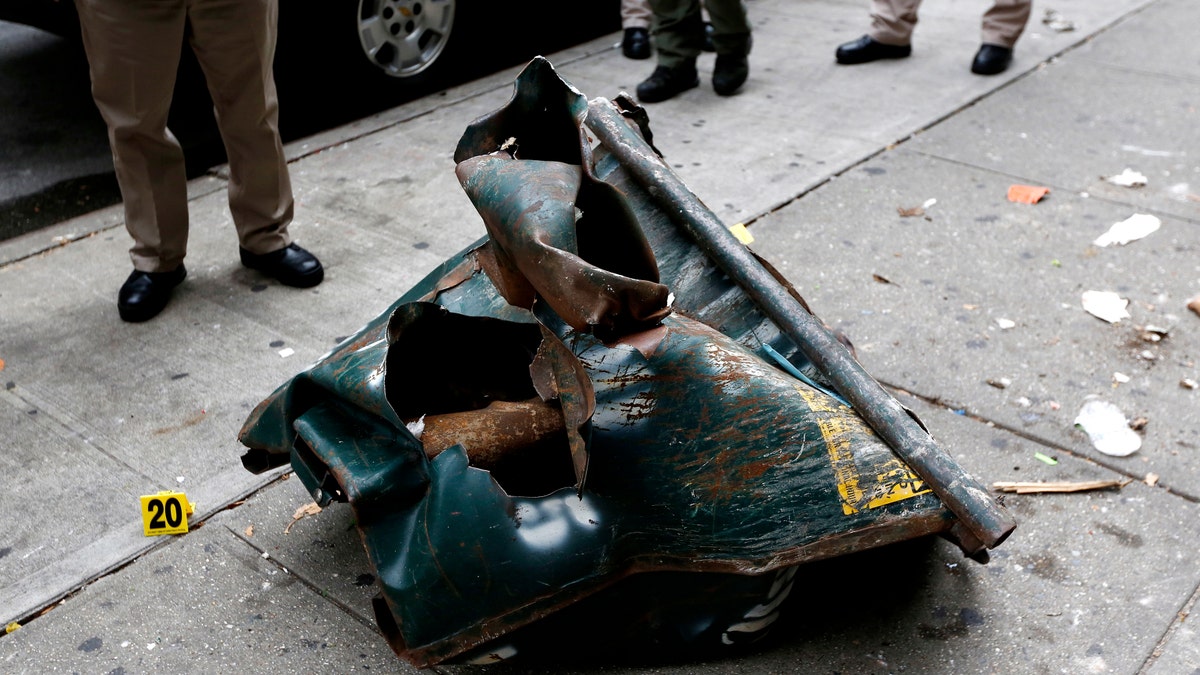
A view of a mangled dumpster at the site of an explosion that occurred on Saturday night in the Chelsea neighborhood of New York, USA, Sept. 18, 2016. (REUTERS/Junstin Lane/Pool)
The Chelsea bombing that injured 29 people on September 17 might have hurt more, and possibly resulted in fatalities, if not for shatterproof glass. Following the 9/11 World Trade Center attacks, extensive building safety modifications were made in New York City, including the addition of shatterproof glass, according to Popular Science.
Extra water pipes to fight fires, welded plates reinforcing building structural columns, reinforced concrete, and enhanced communications and ventilation systems were among other architectural and design improvements that followed the September 11, 2001, terrorist attacks, as reported by The New York Times. Shatterproof glass was installed up and down NYC streets and avenues.
If you've ever seen a shattered car windshield where the glass is broken into hundreds if not thousands of pieces that all remain in place, that's what shatterproof building window glass is designed to do. Two panes of glass are bonded to a sheet of plastic placed between the panes. The glass can still be broken by impact with an object or the force of an explosion, but the design is supposed to prevent the pieces from falling.
Exploding and raining shards of glass following an explosion can injure building inhabitants as well as people outside on the street. Fortunately, residents and visitors in the busy Chelsea neighborhood were spared further injuries from glass.
More From Digital Trends
A New York Times reporter commented on Twitter that street-level glass on buildings in Chelsea saved lives. Eric Lipton, @EricLiptonNYT tweeted "Surveillance video of NYC explosion makes obvious: shatterproof glass installed street level in many NYC buildings post Sept. 11 saved lives."
One of the explosions occurred on the same block as Orangetheory, a fitness club in Chelsea. Surveillance footage from three security cameras at the club showed a small amount of debris falling in front of the club, but street-level windows were still intact after the explosion.
